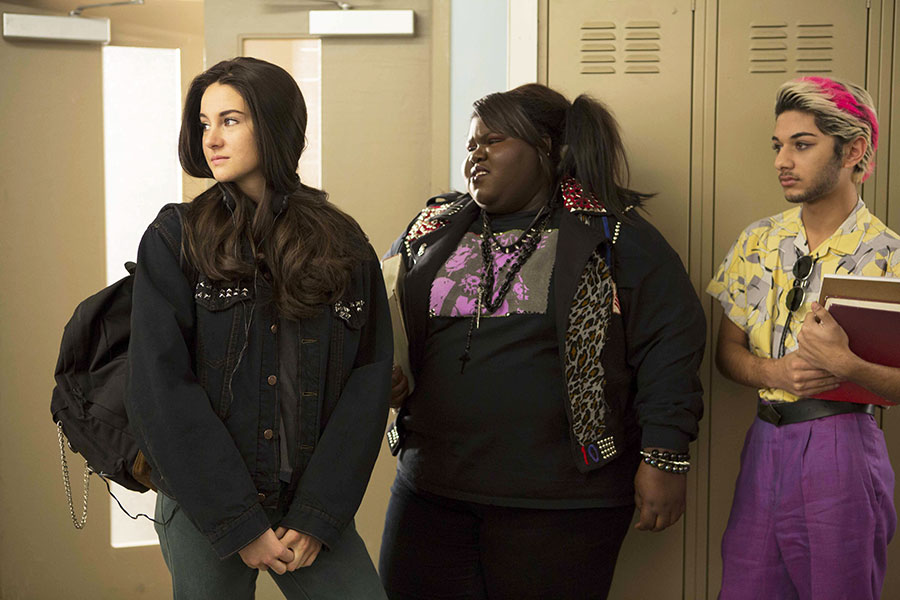White Bird stalls with uneventful story
Life in suburbia can be uneventful. White Bird in a Blizzard spends a lot of time at the heart of 1980s suburbia with very little going on, and a little time with a lot happening -— namely, at the very end. Things almost occur, you are led to expect them, and then they don’t. Director Gregg Araki takes great joy in bringing each scene to the brink of revelation — or violence — before drawing it back into an uneasy serenity. He does this often, making this rather slow film suspenseful enough to keep you interested.

Youth in revolt · Shailene Woodley’s Kat plays the archetype of a rebellious teen while dealing with the disappearance of her mother. – Photo courtesy of Magnolia Pictures
Because there’s much more here than just the story, which follows Kat (Shailene Woodley), a teenager in the late 80s recently transitioned into a swan of a young woman after years of being a chubby duckling. Woodley, accustomed to angst-ridden high school roles by now, perfectly captures Kat’s combination of insecurity and budding sexual prowess. And as she comes into the full bloom of youth, her mother Eve (Eva Green) descends into jealous madness — at one point Eve hawkishly watches Kat apply makeup and notes, “You look like I looked when I was your age.” The film opens with Kat finding her mother asleep on her bed, deliriously checked out at 5 p.m., and only a few days later, she has disappeared without a trace. The moments we meet her are in flashbacks relayed to Kat’s therapist (Angela Bassett), who has the responsibility of unraveling the teenager’s apparent indifference to her unstable mother’s disappearance.
And then, not much happens. Kat doesn’t go on a perilous journey to find her — rather, she listens to Depeche Mode and discusses her sexual exploits with her outcast friends, played by Gabourey Sidibe and Mark Indelicato. She’s much more interested in the newfound sexual disinterest of her boyfriend (Shiloh Fernandez) than her mother’s disappearance. In one scene she pretends to have new evidence as an excuse to seduce the detective (Thomas Jane) assigned to the case. The only indication we get that she’s even thinking about her mother is in strange dreams Kat has, in which she is in an all-white blizzard and finds her mom buried under the snow.
White Bird isn’t all that interested in criminal procedures or detective work — it’s much too occupied with unraveling the complicated and dysfunctional relationships of this suburban family. The highlights of this film are the interactions among the characters, including Kat’s subtle discomfort around her awkward father Brock (a mustachioed and disarming Christopher Meloni) and her quiet seduction of the muscular male archetype that is Detective Scieziesciez. The greatest scenes revolve around the interactions of the family, such as Eve’s silent fury when told to pass the butter and the disgust with which she looks at her inept husband. The juxtaposition of Green’s campy, over-the-top performance — perfectly embellished by the streaks of mascara under her eyes — to her daughter and husband’s subdued naturalness are both hilarious and strangely poignant. This is a woman who’s lost touch, who doesn’t even seem to realize what decade she’s in, demonstrated by her perfectly coifed 1960s housewife wardrobe in 1988.
The conversations between Eve and anyone else are so absurd, so awkward, that it’s difficult not to laugh out of discomfort. Meanwhile, sad-eyed Meloni gives the film a sensitive touch -— compared to Kat’s unfeeling, unaffected Winona Ryder-like persona, Brock is a vulnerable pushover, eager to please and befuddled at his wife’s disappearance. Meloni, known primarily for Law & Order: Special Victims Unit, gives this mystery plot a character with some unique quirks. The film rides on the strength of its performers, who all imbue their characters with hints of absurdity to match the dreamlike quality here. Araki inscribes a Twin Peaks, Lynchian mood to the film in its haunting, dreamy progression, capped off with Laura Palmer herself (Twin Peaks actress Sheryl Lee) making a quick appearance.
So even if the film doesn’t have much plot to cover, it has plenty of people to examine, and it creates a special landscape to do so in. Shag carpets, yellowish lighting and a cozy basement den with an ugly couch complete this dull suburban home that’s slowly driven Eve into alcoholism and loathing. The Cure, Depeche Mode and Joy Division posters adorn Kat’s bedroom, where she dons denim jackets stitched with badges. Araki pays minute attention to detail from start to finish, creating a setting that’s so complex, we don’t mind if very little happens within it.
By the time the film reaches its final stages, the suspense of this inertia has built up to high levels of anticipation, and Araki stretches it out as long as he can. He’s intent on surprising here- — after keeping the viewer on his toes the entire film, the final reveal is as ridiculous, yet fitting, as can be hoped for.

